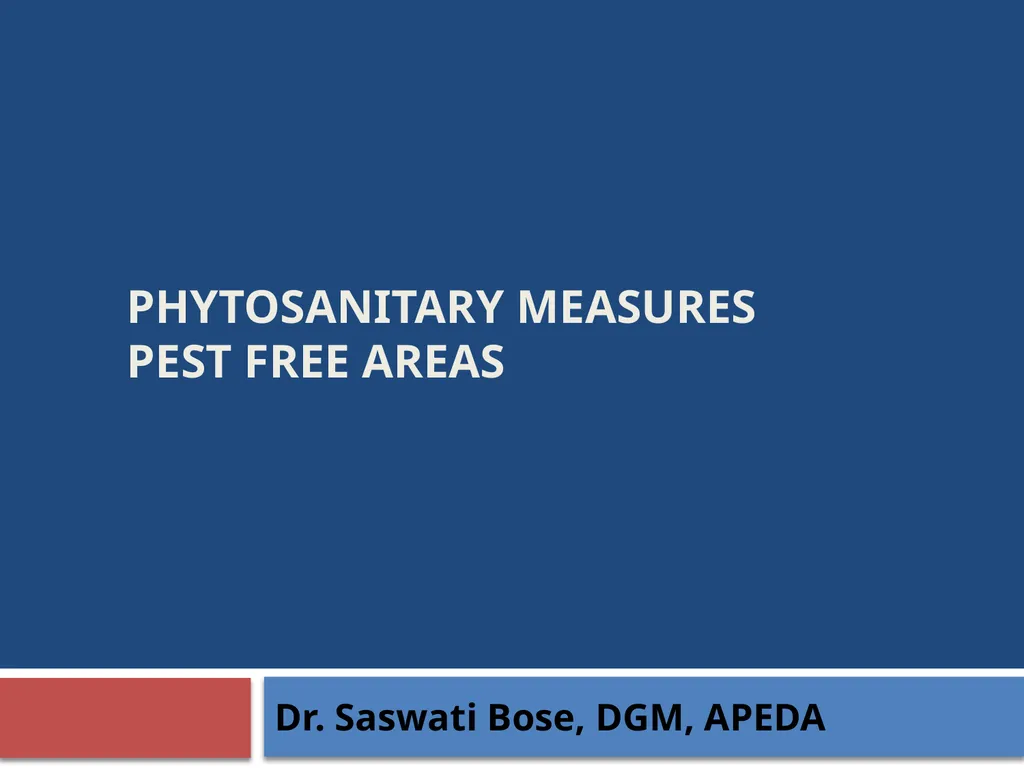
Phytosanitary Measures PEST FREE AREAS Dr. Saswati
Author: liane-varnes | Published: 2025-05-28
Description: Phytosanitary Measures PEST FREE AREAS Dr. Saswati Bose, DGM, APEDA Phytosanitary Procedures for Market Access Import regulation Export certification Surveillance Pest risk analysis Pest eradication Pest Free Areas World Trade Organisation
Download Presentation
Download the PPT/PDF: Download
Transcript:
Loading transcript…